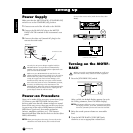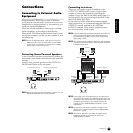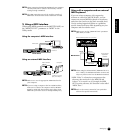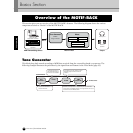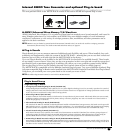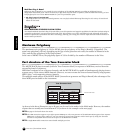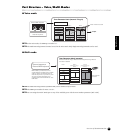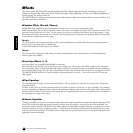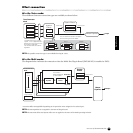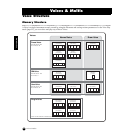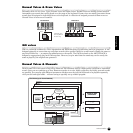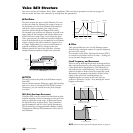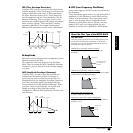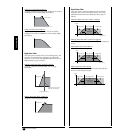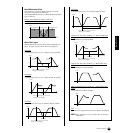
22
Basics Section
Overview of the MOTIF-RACK
Effects
The effects of the MOTIF-RACK employ sophisticated DSP (digital signal processing) technology, letting you
enhance or dramatically change the sound. In the final stages of programming, you can set the effects parameters to
further change the sound’s character.
The MOTIF-RACK’s effect processing features the following four effect units: System effects, Insertion effects, Part
equalizer, and Master equalizer.
● System Effects (Reverb, Chorus)
System Effects are applied to the overall sound, whether it be a voice, or an entire multi setup.
With System effects, the sound of each part is sent to the effect according to the effect Send Level for each part. The
processed sound (referred to as “wet”) is sent back to the mixer, according to the Return Level, and output — after
being mixed with the unprocessed “dry” sound. This arrangement lets you prepare an optimum balance of the effect
sound and the original sound of the parts.
Reverb
The Reverb effects add a warm ambience to the sound, simulating the complex reflections of actual performance
spaces, such as a concert hall or a small club.
A total of 20 different Reverb types are available.
Chorus
The Chorus effects provide a wide variety of sound transformations and enhancements. A total of 44 different
Chorus types are available.
● Insertion Effects (1, 2)
Insertion effects can be applied individually to each part.
Insertion effects are mainly used to directly process a single part. The depth of the effect is adjusted by setting the
dry/wet balance. Since an Insertion effect can only be applied to one particular part, it should be used for sounds you
want to drastically change. You can also set the balance so that only the effect sound is heard, by setting Wet to 100%.
The MOTIF-RACK features two Insertion effect systems (Insertion 1 and 2) — each with a total of 107 internal
effect types.
● Part Equalizer
The Part Equalizer is used to correct the tonal balance of Voices assigned to each Part by raising or lowering three
frequency bands.
In other words, this lets you fine-tune the sound of each Part to make it “sit better” in the overall mix. For example,
you can emphasize an important Part in the mix by making it brighter or boosting the mid range, while making other
sounds around it softer. Or if a bass Part and piano Part are competing in the mix, you can make the two sound better
by cutting the low range of the piano.
● Master Equalizer
Usually an equalizer is used to correct the sound output from amps or speakers to match the special character of the
room. The sound is divided into several frequency bands, then by raising or lowering the level for each band, the
correction is made. The MOTIF-RACK has a high-quality five-band digital equalizer that lets you adjust the overall
sound according to the type of music you play — classical music being more refined and soft, pop music more crisp,
and rock music more dynamic. This allows you to emphasize the special characteristics of the music and make your
performance more enjoyable.



